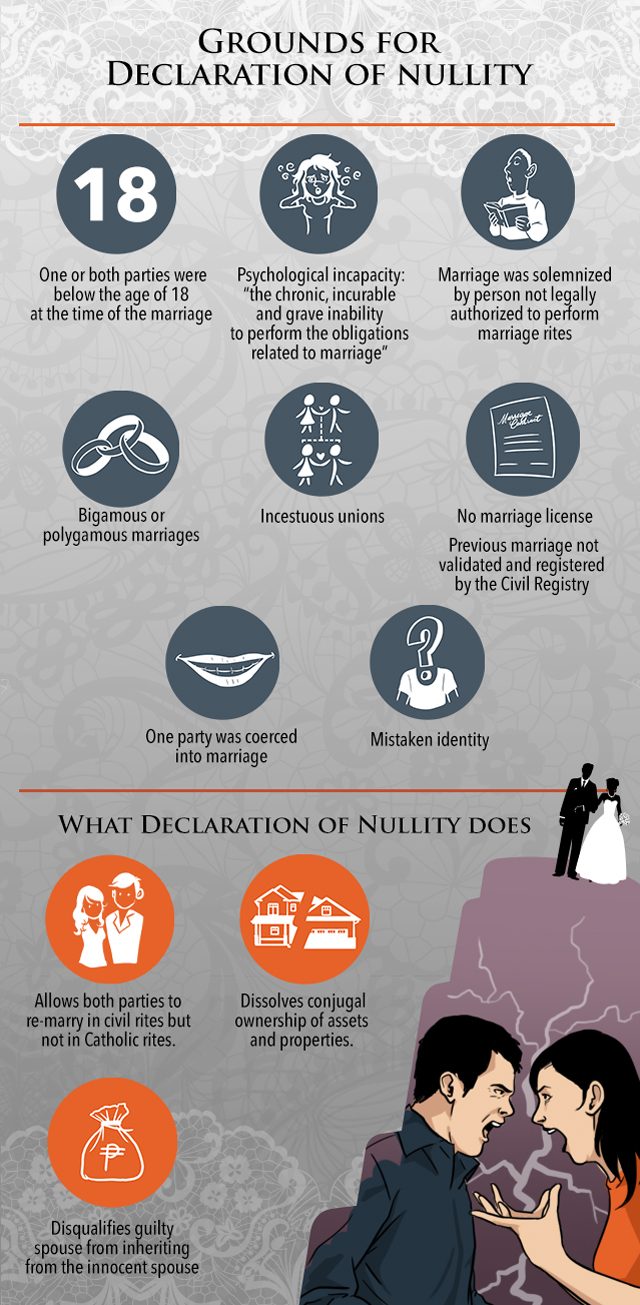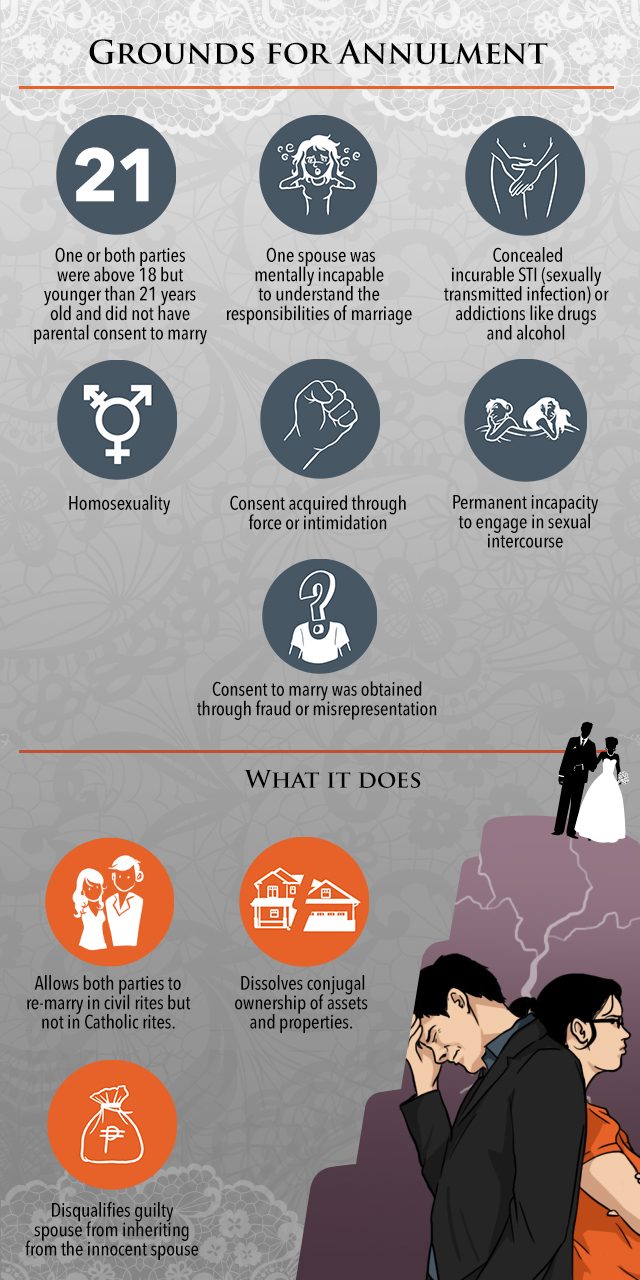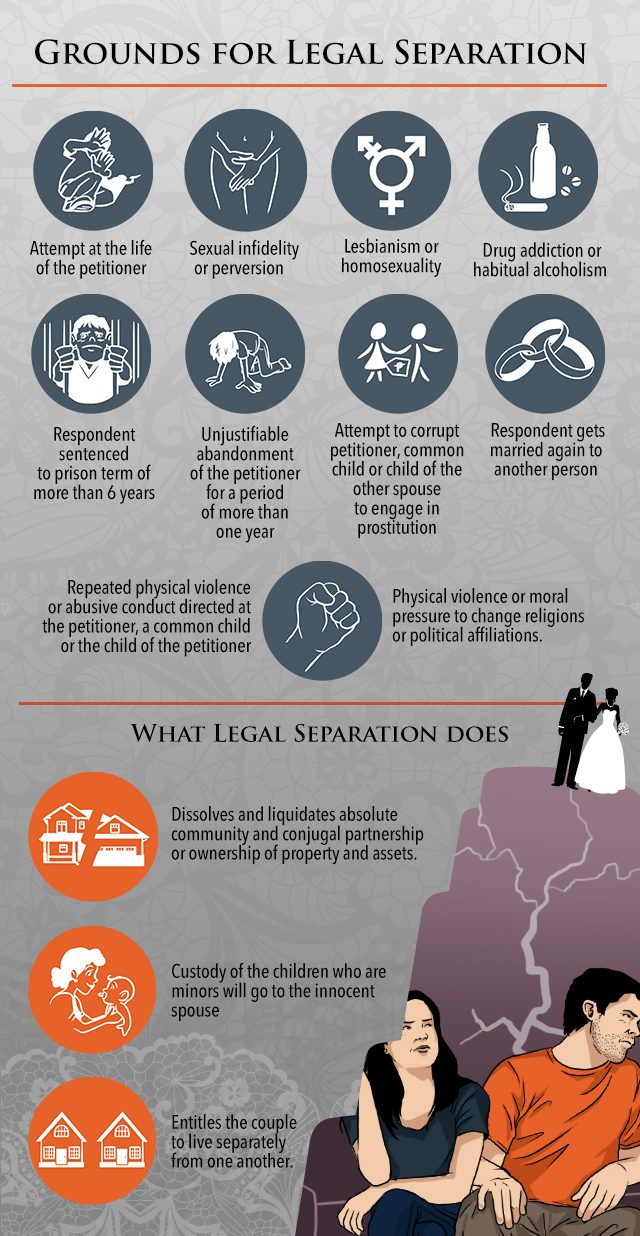SUMMARY
This is AI generated summarization, which may have errors. For context, always refer to the full article.

(READ: Part 1: The annulment business)
MANILA, Philippines – How do I leave thee? Let us count the ways.
For most Filipinos, divorce is not an option if marital bonds turn sour. But there are ways to untie the matrimonial knot and cut yourself loose.
This explainer can help guide you through the legalese of The Family Code which lists various grounds for terminating marriages.
1. Declaration of nullity:
What it is: Applies to a marriage that is void or invalid from the beginning because of conditions that were present before the marriage was solemnized or because certain requirements of marriage were lacking.
According to the statistics provided by the Office of the Solicitor General (OSG), the most common ground for declaration of nullity is psychological incapacity, which is often cited as the Philippine version of “irreconcilable differences”.

2. Annulment
Not to be confused with Declaration of Nullity, in an annulment, the marriage is considered valid until declared void. However, there are certain conditions to annul and legally cancel the marriage.

3. Legal separation
Legal separation is a mere separation of bed and board; a couple may legally live separately, but the marital bond remains intact. Neither party can re-marry.
Legal separation must be filed within one year from the date the respondent became aware of the causes for legal separation and within 5 years from the time of the occurrence of the cause.
A “cooling off period” of 6 months is mandatory to give the parties a chance at reconciliation. From date of filing, the court will wait 6 months before starting the trial proceedings.

What legal separation does not do:
Apart from not allowing either party to re-marry, if the wife used the legal surname of her husband during the time of the marriage, she cannot revert to her maiden name because the marital bond is still considered valid.
![]() 4. Divorce for Muslims
4. Divorce for Muslims
Under the Code of Muslim Personal Laws, Filipino Muslims are allowed to divorce provided that both parties or the male is Muslim and the marriage was solemnized in accordance with Muslim law.
![]() 5. Church annulments
5. Church annulments
A Church annulment is decided on by the Church Matrimonial Tribunal comprised of canon lawyers (priests who are educated in the laws of the Church). In comparison, a civil annulment is decided by a presiding judge in a trial court.
A Church annulment does not replace or substitute a civil annulment.
Civil courts do not recognize Church annulments on matters regarding property rights, family relations and custody of children. However, securing a Church annulment allows the parties to re-marry in Catholic Church rites. – Rappler.com
This infographic is meant only to serve as a guide. For complete details on dissolution of marriage in the Philippines, please check the Family Code of the Philippines.
Sources:
- The Family Code of the Philippines
- Marriage and Unmarried Cohabitation: The Rights of Husbands, Wives and Lovers by Elizabeth Aguiling-Pangalangan
Add a comment
How does this make you feel?
![[In This Economy] A counter-rejoinder in the economic charter change debate](https://www.rappler.com/tachyon/2024/04/TL-counter-rejoinder-apr-20-2024.jpg?resize=257%2C257&crop=267px%2C0px%2C720px%2C720px)
![[Vantage Point] Joey Salceda says 8% GDP growth attainable](https://www.rappler.com/tachyon/2024/04/tl-salceda-gdp-growth-04192024.jpg?resize=257%2C257&crop_strategy=attention)
![[ANALYSIS] A new advocacy in race to financial literacy](https://www.rappler.com/tachyon/2024/04/advocacy-race-financial-literacy-April-19-2024.jpg?resize=257%2C257&crop_strategy=attention)


There are no comments yet. Add your comment to start the conversation.